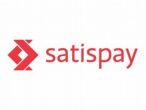in caricamento ...
FLASH: Empire State Manufacturing Index, e l’America va…
L’indice della manifattura (Empire State Manufacturing) di New York fotografa quanto più volte annunciato sulle pagine di questo blog. Gli USA stanno frenando anche se non lo si vuole ammettere. Questo indicatore, elaborato dalla Federal Reserve di New York, è sceso violentemente sotto lo zero ed arriva a quota -14,9 punti, un livello ben diverso dai +3,8 punti di luglio: ma la cosa peggiore è che il mercato prevedeva un livello a +4,75 punti. Si tratta inoltre del livello più basso dal 2009.
Quadro quindi molto peggiore di quanto si potesse pensare nel sentiment delle aziende di NYC che resta pur sempre una importante cartina tornasole per tastare il polso allo stato di salute dell’economia USA.
Empire State Index: the chart (effettivo e previsioni)
Le motivazioni? Nemmeno ve le dobbiamo dire. Un forte rallentamento nel commercio verso l’Europa e la Cina soprattutto a causa del Dollaro USA troppo forte (quindi immaginatevi l’effetto un aumento dei tassi e cosa accadrà dopo la svalutazione dello Yuan). Sembra invece che in ambito interno le cose vadano un po’ meglio. Intanto però il grafico qui sopra non dà spazio a grosse interpretazioni. Il livello raggiunto dall’Empire State Index si avvicina molto a quello visto durante la Grande crisi. Dite che è un buon segnale?
Riproduzione riservata
STAY TUNED!
(Clicca qui per ulteriori dettagli)
Segui @intermarketblog
(Se trovi interessante i contenuti di questo articolo, condividilo ai tuoi amici, clicca sulle icone sottostanti, sosterrai lo sviluppo di I&M!). E se lo sostieni con una donazione, di certo non mi offendo…
La nuova guida per i tuoi investimenti. Take a look!
Questo post non è da considerare come un’offerta o una sollecitazione all’acquisto. Informati presso il tuo consulente di fiducia. Se non ce l’hai o se non ti fidi più di lui,contattami via email (intermarketandmore@gmail.com).
NB: Attenzione! Leggi il disclaimer (a scanso di equivoci!)
“… After having widened amid concerns about the difficult negotiations between Greece and its Creditors, Greek and other peripheral Euro-Area sovereign spreads narrowed, on net, over the intermeeting period as news emerged of progress toward an agreement.
In China, stock prices fell substantially, prompting a number of policy and regulatory actions by Chinese officials to support the stock market.
While these developments attracted Investor attention, reaction in asset markets outside Greece and China was limited on balance.
Sovereign bond yields and monetary policy expectations in the United Kingdom changed little, on net, over the intermeeting period.
By contrast, yields in Canada, New Zealand, Norway, and Sweden decreased following weaker-than-expected macroeconomic data releases and additional monetary policy accommodation.
The foreign exchange value of the U.S. dollar increased during the intermeeting period against the currencies of major U.S. trading partners.
Stock markets in most “advanced foreign economies” ended the period higher.
Equity prices in “emerging market economies”, however, generally moved lower on net.
The staff (of the Federal Reserve) provided its latest report on potential risks to financial stability.
The strong capital position of the U.S. banking sector, low to moderate use of leverage elsewhere in the financial system, stability in the level of maturity transformation by financial institutions, and still-moderate rates of borrowing by the private nonfinancial sector were seen as factors supporting overall financial stability.
However, rising debt burdens for riskier businesses as well as somewhat elevated valuations and loosening lending standards for many asset classes pointed to some increasing concerns.
The effect of financial stresses related to Greece and China on the largest U.S. financial firms WAS LIMITED to date, perhaps reflecting the relatively strong financial positions and low direct exposures among such firms and a view among market participants that foreign authorities would take actions to stem spillovers. …”
l- – – – –
_§_ Federal Reserve [Board of Governors of the Federal Reserve System (FRB), the], “Minutes of the Federal Open Market Committee (FOMC): July 28–29, 2015” – August 19, 2015
http://www.federalreserve.gov/monetarypolicy/files/fomcminutes20150729.pdf
l> Staff Review of the Financial Situation, P. 6 / 12
with including the
“Statement of the FOMC meeting of (the) July 28-29, 2015” – July 29, 2015
http://www.federalreserve.gov/newsevents/press/monetary/20150729a.htm
– – – – -l
Surfer © サーファー






°l° Reading Tips °l°
Monetary policy measures taken by the Federal Reserve (Fed) as a response to the 2007-2009 financial crisis and subsequent economic downturn led to a large increase in the level of outstanding reserves.
As a result of these policies, the amount of reserves in the Banking System increased dramatically to over $2 trillion during 2013.
The Federal Open Market Committee (FOMC) has a range of tools to control short-term Market interest rates in this situation.
The Authors – [in the paper: see to the link in _§_, at the end] – try to study several of these tools; namely:
1. Interest On Excess Reserves (IOER),
2. Reverse Repurchase Agreements (RRPs),
3. Term Deposit Facility (TDF).
They find that overnight RRPs (ON RRPs) provide a better floor on rates than term RRPs because they are available to absorb daily liquidity shocks.
Whether the TDF or RRPs best support equilibrium rates depends on the relative intensity of the frictions that Banks face, which are Bank balance sheet costs and interbank monitoring costs in their model.
They show in their analysis that when both costs are large, using the RRP and TDF concurrently most effectively raises short-term rates.
While Public money supplied by the Fed in the form of reserves can alleviate Bank liquidity shocks by reducing interbank lending costs, large levels of reserve increase Banks’ balance sheet size and can induce greater Bank “moral hazard”.
RRPs can reduce levels of costly Bank equity that Banks are endogenously required to hold as a commitment device against risk-shifting returns on assets.
When Banks are monopolistic within their sector but engage in Bertrand competition across sectors, many contracts are possible with the potential of some of them having equilibrium money Market returns also below IOER and the competitive outcome.
In either case, the tools can be used to raise rates and limit the amount of surplus extracted from the Household.
The paper – which I suggest you read, carefully! – is the fi rst to analyze the additional Fed tools and their effectiveness in controlling short-term money Market rates and managing Fed liabilities.
The Authors provide positive-result predictions on the effects of the tools on a dispersion of interest rates and normative results that indicate the optimal quantity and composition of the provision of Public and Private money.
Other extensions to the model, in the analysis, can include incorporating additional financial Intermediaries, such as securities dealers and Government-Sponsored Enterprises (GSEs).
The Central Bank can manage its liabilities facilities with regard to these financial Institutions to further absorb reserves, influence the broad range of money Market rates, and impact the level of lending, output, inflation, and consumption.
The framework developed is also versatile to analyze a variety of further Institutional details for financial Intermediaries and money Markets.
l- – – – –
_§_ A. Martin, J. McAndrews, A. Palida, D. Skeie (Bank of Japan, Institute for Monetary and Economic Studies, the), “Federal Reserve tools for managing rates and reserves” – IMES Discussion Papers No. 2015-E-8: July 28, 2015
http://www.imes.boj.or.jp/research/papers/english/15-E-08.pdf
– – – – -l
Surfer © サーファ [Ciao a Tutti]